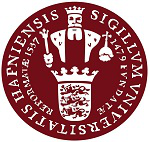Even if image contrast obtained from X-rays absorption is poorly sensitivity to weakly absorbing objects consisting of light elements, such as polymers and biological soft tissues, since the discovery of X-rays, transmission imaging has been extensively used. Nowadays, however, such drawback can be overcome due to the development of X-rays phase imaging. In fact, X-rays phase imaging based on grating optics has become widely used due to its practical advantage, i.e. laboratory X-rays sources are quite competitive.
On the other hand, neutron radiography is a powerful tool for non-destructive testing of materials for industrial applications and research. This technique is complementary to X-rays and gamma-rays radiography and finds applications in diverse areas. One practical impact is the high contrast between hydrogen, which interacts very strongly with neutrons, and most metals, which offer effective transmission of neutrons. This is directly opposed to X-rays imaging, and opens the possibility to effectively visualize the dynamics of organic hydrogen-containing substances in metal containers or to view plastic seals or lubricants embedded within metal structures.
From the experimental side, both X-rays and neutron radiography involve placing an object in the path of the beam, and measuring the shadow image of the object that is projected onto a detector. However tomography takes a step further in the data collection process and entails rotating the sample in the beam and recording multiple 2D images through an angular range of 180°. From the data set, a 3D representation through the object can be reconstructed. This allows for detailed information, but also implies that the data obtained by the imaging technique is huge the reconstruction of the 3D-image is computationally intensive. Several programs are available commercially or have been placed in the public domain, but are very difficult to understand and a lot of care has to be taken in the reconstruction process. Consequently, it is essential to establish advanced training of PhD student if we want to insure the future scientific success of such powerful techniques.
The school is part of the PhD Program of the University of Copenhagen and is limited to 20 students to be selected from the applications received. There is no fee for the participants.
The classes are structured as follows. The mornings will be devoted to two lectures given by experts in the field, which will focus on scientific potential of the imaging technique as well as on the understanding of the data analysis process. In the first day of the class the students will be given experimental results to analyze. The process of data reduction will take place in the afternoons under close supervision of the lecturers. The results will be presented by the students as an oral contribution in the last day of the class.
Students fulfilling all the requirements of the classes will get 5 ECTS for this course.
On the other hand, neutron radiography is a powerful tool for non-destructive testing of materials for industrial applications and research. This technique is complementary to X-rays and gamma-rays radiography and finds applications in diverse areas. One practical impact is the high contrast between hydrogen, which interacts very strongly with neutrons, and most metals, which offer effective transmission of neutrons. This is directly opposed to X-rays imaging, and opens the possibility to effectively visualize the dynamics of organic hydrogen-containing substances in metal containers or to view plastic seals or lubricants embedded within metal structures.
From the experimental side, both X-rays and neutron radiography involve placing an object in the path of the beam, and measuring the shadow image of the object that is projected onto a detector. However tomography takes a step further in the data collection process and entails rotating the sample in the beam and recording multiple 2D images through an angular range of 180°. From the data set, a 3D representation through the object can be reconstructed. This allows for detailed information, but also implies that the data obtained by the imaging technique is huge the reconstruction of the 3D-image is computationally intensive. Several programs are available commercially or have been placed in the public domain, but are very difficult to understand and a lot of care has to be taken in the reconstruction process. Consequently, it is essential to establish advanced training of PhD student if we want to insure the future scientific success of such powerful techniques.
The school is part of the PhD Program of the University of Copenhagen and is limited to 20 students to be selected from the applications received. There is no fee for the participants.
The classes are structured as follows. The mornings will be devoted to two lectures given by experts in the field, which will focus on scientific potential of the imaging technique as well as on the understanding of the data analysis process. In the first day of the class the students will be given experimental results to analyze. The process of data reduction will take place in the afternoons under close supervision of the lecturers. The results will be presented by the students as an oral contribution in the last day of the class.
Students fulfilling all the requirements of the classes will get 5 ECTS for this course.

